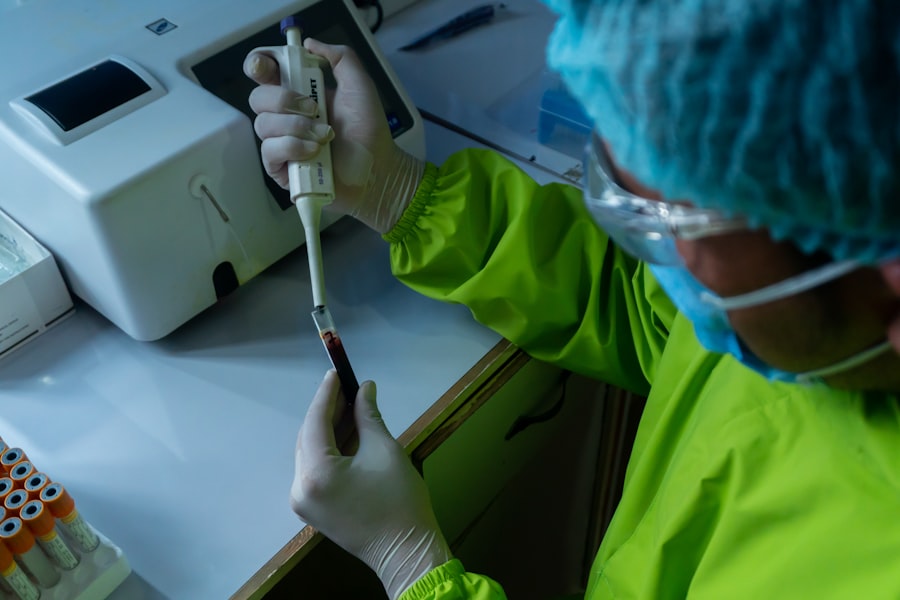Operation Paperclip emerged in the aftermath of World War II, a time when the United States was grappling with the implications of a rapidly changing global landscape. As the war drew to a close, American military and intelligence officials recognized the potential value of German scientists, engineers, and technicians who had contributed to the Nazi war effort. The U.S. government sought to harness their expertise to bolster its own scientific and technological capabilities, particularly in the fields of rocketry, aeronautics, and military technology. This initiative was not merely a matter of acquiring knowledge; it was also a strategic maneuver in the context of the burgeoning Cold War, where technological superiority would play a crucial role in national security. The origins of Operation Paperclip can be traced back to the Office of Strategic Services (OSS), the precursor to the Central Intelligence Agency (CIA). As Allied forces advanced into Germany, OSS operatives began identifying key figures within the German scientific community. The program was officially initiated in 1945, with the aim of relocating these individuals to the United States. The name “Paperclip” itself originated from the practice of attaching paperclips to the files of selected scientists, marking them for expedited processing and relocation. This operation would ultimately lead to the recruitment of over 1,600 German scientists, engineers, and technicians, many of whom had been involved in controversial projects during the Nazi regime.
Key Takeaways
- Operation Paperclip was a secret program by the United States to recruit German scientists after World War II.
- The recruitment process involved selecting scientists with expertise in areas such as rocketry, aerospace engineering, and biological warfare.
- The controversy surrounding Operation Paperclip stems from the fact that some of the scientists hired had been involved in Nazi war crimes.
- Operation Paperclip had a significant impact on American science and technology, contributing to advancements in space exploration and military technology.
- The ethical and moral dilemmas of hiring former Nazi scientists continue to be debated, as their contributions to American society are weighed against their past actions.
The Recruitment and Selection Process
The recruitment and selection process for Operation Paperclip was both systematic and secretive. U.S. military intelligence agencies conducted extensive evaluations to identify individuals whose skills could be leveraged for American interests.
Scientists were assessed not only for their technical expertise but also for their political affiliations and past activities during the war. The goal was to ensure that those selected would be able to contribute positively to American scientific endeavors while minimizing any potential security risks.
Many were interrogated about their wartime activities, and their backgrounds were scrutinized to determine their loyalty to the United States. Despite this scrutiny, some individuals with questionable pasts were still brought into the fold, as their technical skills were deemed too valuable to overlook. This duality in the selection process highlighted the pragmatic approach taken by U.S.
officials, who prioritized scientific advancement over moral considerations. The recruitment efforts were often shrouded in secrecy, reflecting the sensitive nature of the operation and its implications for American society.
The Controversy Surrounding Operation Paperclip

Operation Paperclip was not without its controversies, as it raised significant ethical questions about the United States’ willingness to overlook the pasts of individuals who had been associated with a regime responsible for horrific atrocities. Critics argued that by employing former Nazi scientists, the U.S. government was tacitly endorsing their actions during the war and undermining its own moral standing on the global stage.
This dilemma was particularly pronounced given the Nuremberg Trials, which sought to hold Nazi leaders accountable for their crimes against humanity. The controversy surrounding Operation Paperclip extended beyond ethical concerns; it also sparked debates about national security and public trust. Many Americans were alarmed at the prospect of former Nazis working on sensitive military projects, fearing that their loyalties might still lie with their former regime.
This skepticism was compounded by revelations that some scientists had been involved in unethical experiments during the war. As a result, Operation Paperclip became a focal point for discussions about the balance between scientific progress and moral responsibility, raising questions that continue to resonate in contemporary society.
The Impact of Operation Paperclip on American Science and Technology
| Impact of Operation Paperclip on American Science and Technology |
|---|
| Increased expertise in rocket technology |
| Advancements in aerospace engineering |
| Contributions to the development of the US space program |
| Enhanced understanding of missile technology |
| Improved knowledge in aviation and aircraft design |
| Impact on Cold War technological competition |
The impact of Operation Paperclip on American science and technology was profound and far-reaching. The influx of German scientists significantly accelerated advancements in various fields, particularly in aerospace engineering and rocketry. One of the most notable figures recruited through this program was Wernher von Braun, who played a pivotal role in developing the V-2 rocket for Nazi Germany.
After relocating to the United States, von Braun became instrumental in NASA’s Apollo program, which ultimately led to the moon landing in 1969. His contributions exemplified how former adversaries could be transformed into key assets in a new context. Beyond rocketry, Operation Paperclip also facilitated advancements in other scientific domains, including medicine and physics.
The expertise brought by these scientists contributed to developments in missile technology, nuclear research, and even computer science. The collaboration between American scientists and their German counterparts fostered an environment of innovation that propelled the United States into a position of technological leadership during the Cold War era. This transformation not only reshaped American industry but also had lasting implications for global scientific collaboration.
The Contributions of Operation Paperclip Scientists to American Society
The contributions of Operation Paperclip scientists extended beyond military applications; they also had a significant impact on American society as a whole. Many of these individuals became prominent figures in academia and industry, shaping educational curricula and influencing future generations of scientists and engineers. Their work laid the groundwork for numerous technological advancements that would define modern life, from space exploration to medical breakthroughs.
In addition to their technical contributions, these scientists also played a role in fostering a culture of scientific inquiry and innovation within American society. Their experiences in Germany brought unique perspectives that enriched American scientific discourse. As they integrated into American institutions, they helped bridge gaps between different fields of study and encouraged interdisciplinary collaboration.
This cultural exchange not only advanced scientific knowledge but also contributed to a broader understanding of global issues, emphasizing the importance of international cooperation in addressing complex challenges.
The Ethical and Moral Dilemmas of Hiring Former Nazi Scientists

The ethical and moral dilemmas surrounding Operation Paperclip remain contentious topics that provoke ongoing debate among historians, ethicists, and policymakers. On one hand, proponents argue that the strategic benefits gained from employing these scientists justified their recruitment, especially during a time when national security was paramount. They contend that scientific progress often requires difficult choices and that the potential advancements outweighed concerns about individual pasts.
Conversely, critics maintain that hiring former Nazis represented a betrayal of moral principles and an affront to the victims of their actions during World War
They argue that by prioritizing technological advancement over ethical considerations, the U.S. government compromised its own values and sent a troubling message about accountability and justice. This tension between pragmatism and morality continues to resonate today as societies grapple with similar dilemmas regarding collaboration with individuals or regimes that have committed human rights abuses.
The Aftermath of Operation Paperclip
The aftermath of Operation Paperclip saw both positive outcomes and lingering controversies that shaped public perception of science and technology in America. While many former Nazi scientists successfully integrated into American society and made significant contributions to various fields, their presence also sparked debates about accountability and historical memory. As details about their pasts emerged over time, public scrutiny intensified, leading some to question whether these individuals should have been granted asylum in the first place.
In addition to public discourse, Operation Paperclip’s legacy influenced subsequent policies regarding immigration and national security. The program set a precedent for how governments might prioritize scientific expertise over ethical considerations in times of crisis. This approach has continued to inform discussions about immigration policy and national security in contemporary contexts, raising questions about how societies balance moral imperatives with practical needs.
The Legacy of Operation Paperclip
The legacy of Operation Paperclip is multifaceted, encompassing both significant advancements in science and technology as well as complex ethical considerations that continue to shape contemporary discourse. On one hand, the program is often credited with accelerating America’s technological prowess during the Cold War, contributing to achievements such as space exploration and advancements in military technology. The successful integration of German scientists into American institutions exemplified how former adversaries could collaborate for mutual benefit.
However, this legacy is also marked by ongoing debates about accountability and moral responsibility. The ethical implications of employing individuals associated with a regime responsible for atrocities remain relevant today as societies confront similar dilemmas regarding collaboration with controversial figures or regimes. As historians continue to examine Operation Paperclip’s impact on American society, it serves as a reminder of the complexities inherent in balancing progress with ethical considerations.
The Role of Operation Paperclip in the Space Race
Operation Paperclip played a crucial role in shaping America’s ambitions during the Space Race—a competition between the United States and the Soviet Union for supremacy in space exploration during the Cold War era. The expertise brought by German scientists significantly advanced U.S. capabilities in rocketry and aerospace engineering, laying the foundation for landmark achievements such as satellite launches and manned space missions.
Wernher von Braun’s leadership within NASA exemplified this influence; his vision for space exploration transformed America’s approach to rocket technology. Under his guidance, NASA developed powerful launch vehicles capable of carrying astronauts beyond Earth’s atmosphere. The successful Apollo missions not only showcased American ingenuity but also served as a symbol of national pride during a tumultuous period marked by geopolitical tensions.
The Influence of Operation Paperclip Scientists on Cold War Politics
The influence of Operation Paperclip scientists extended beyond scientific advancements; they also played significant roles in shaping Cold War politics. Their expertise contributed to military strategies aimed at countering Soviet advancements while bolstering America’s position on the global stage. As tensions escalated between superpowers, these scientists became integral players in developing technologies that would define military capabilities throughout the Cold War.
Moreover, their presence within American institutions fostered an environment conducive to innovation and collaboration across disciplines—an essential factor in maintaining technological superiority during this critical period. By bridging gaps between academia, industry, and government agencies, Operation Paperclip scientists helped create an ecosystem that prioritized research and development as vital components of national security strategy.
The Continued Debate Over Operation Paperclip and its Implications
The debate surrounding Operation Paperclip remains relevant today as societies grapple with similar ethical dilemmas regarding collaboration with individuals or regimes associated with human rights abuses or controversial ideologies. As new technologies emerge and global challenges evolve, questions about accountability versus pragmatism continue to resonate within public discourse. Historians, ethicists, and policymakers continue to examine Operation Paperclip’s legacy through various lenses—considering not only its impact on science and technology but also its implications for contemporary discussions about immigration policy, national security strategy, and moral responsibility.
As societies navigate complex global issues today—ranging from climate change to cybersecurity—the lessons learned from Operation Paperclip serve as a reminder of the intricate interplay between progress and ethics in shaping our collective future.
Operation Paperclip was a secret program initiated by the United States after World War II, aimed at recruiting German scientists, engineers, and technicians, many of whom were former members of the Nazi Party. This controversial operation brought over 1,600 scientists, including Wernher von Braun and his team, to America to aid in the country’s technological and scientific advancement during the Cold War. For a deeper dive into the implications and ethical considerations of Operation Paperclip, you can explore a related article on the topic by visiting In The War Room. This resource provides further insights into the complex legacy of these scientists and their contributions to American scientific progress.
WATCH THIS! 🪖How Stolen Nazis Built Cold War Power
FAQs
What is Operation Paperclip?
Operation Paperclip was a secret program conducted by the United States government in the aftermath of World War II. Its purpose was to recruit German scientists, engineers, and technicians, including former members of the Nazi Party, to work for the United States.
Who were the scientists involved in Operation Paperclip?
The scientists involved in Operation Paperclip included individuals who had expertise in fields such as rocketry, aerospace engineering, medicine, and other technical areas. Some of the most notable scientists recruited through Operation Paperclip included Wernher von Braun, who played a key role in the development of the American space program.
What was the purpose of recruiting these scientists?
The United States sought to gain the expertise and knowledge of these German scientists to advance its own technological and scientific capabilities, particularly in the context of the Cold War. The goal was to leverage the expertise of these individuals for military and strategic purposes.
What were the ethical implications of Operation Paperclip?
Operation Paperclip has been the subject of ethical debate due to the recruitment of individuals who had been affiliated with the Nazi Party and the use of their expertise despite their involvement in war crimes and human rights abuses during World War II. The program has raised questions about the balance between national security interests and ethical considerations.
How were the scientists integrated into American society?
The scientists recruited through Operation Paperclip were brought to the United States and provided with employment opportunities in various government agencies, research institutions, and universities. They were often given new identities and their past affiliations with the Nazi Party were downplayed or concealed.




